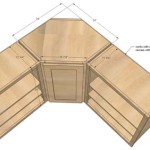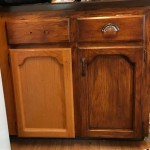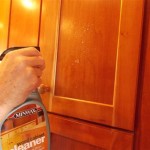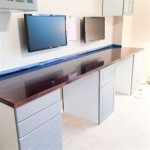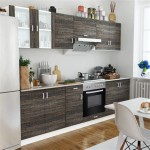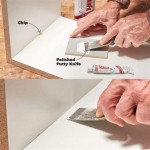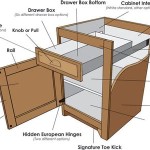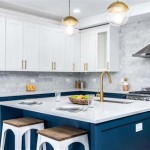```html
Kitchen Cabinet Decor Paper: An In-Depth Guide
Kitchen cabinet decor paper, often referred to as contact paper, shelf liner, or decorative vinyl, is a self-adhesive material used to enhance the aesthetic appeal and protect the surfaces of kitchen cabinets. It provides a cost-effective and relatively simple method to refresh the appearance of dated or worn cabinetry without the significant expense and labor associated with full replacement or professional refinishing. This material comes in a wide variety of colors, patterns, and textures, allowing homeowners to customize their kitchen space according to their individual preferences and design schemes.
The application of kitchen cabinet decor paper involves adhering a thin, flexible sheet of vinyl or similar material to the cabinet surfaces. The adhesive backing ensures that the paper adheres firmly to the cabinet, creating a smooth and uniform finish. While traditionally used for interior surfaces, advancements in adhesive technology and material durability have led to some decor papers being suitable for exterior cabinet surfaces, especially those with minimal exposure to moisture and direct sunlight. The availability of different thicknesses and finishes further expands the possibilities for customization and protection.
Key Considerations Before Applying Kitchen Cabinet Decor Paper
Prior to embarking on a kitchen cabinet decor paper project, several crucial factors must be considered to ensure a successful and long-lasting result. Proper preparation, material selection, and application techniques are essential for achieving a professional-looking finish.
Firstly, the existing condition of the cabinets plays a significant role. Surfaces must be clean, dry, and free of any loose paint, grease, or debris. Any imperfections, such as scratches or dents, should be addressed prior to application. Filling these imperfections with wood filler and sanding them smooth will create a more even surface for the decor paper to adhere to. Failure to properly prepare the surface can lead to bubbling, peeling, or uneven adhesion of the decor paper. Thorough cleaning with a degreasing agent is highly recommended to remove any residue that could interfere with the adhesive bond.
Secondly, the type of decor paper selected is critical. Factors such as the material composition, thickness, pattern, and adhesive strength should be carefully evaluated. Thicker papers tend to be more durable and resistant to tearing and scratching, while thinner papers may be easier to work with on intricate surfaces. The adhesive strength should be appropriate for the type of cabinet surface (e.g., painted wood, laminate, metal). It's highly advisable to test a small, inconspicuous area of the cabinet with the chosen decor paper to assess adhesion and appearance before committing to the entire project. Furthermore, the pattern or texture should complement the overall kitchen design and not clash with existing elements.
Thirdly, proper tools are necessary for a professional application. These include a measuring tape, scissors or a utility knife, a smoothing tool (such as a plastic squeegee), and a clean, lint-free cloth. Precise measurements are essential for accurate cutting and minimal waste. A sharp cutting tool ensures clean, straight edges. The smoothing tool is used to eliminate air bubbles and ensure even adhesion of the decor paper to the cabinet surface. The lint-free cloth can be used to wipe away any excess adhesive or debris that may accumulate during the application process. Investing in quality tools will significantly improve the ease and outcome of the project.
Application Techniques for Optimal Results
The successful application of kitchen cabinet decor paper hinges on employing precise and methodical techniques. Rushing the process or neglecting critical steps can lead to unsatisfactory results and the need for rework.
Begin by accurately measuring the cabinet surfaces to be covered. Add a small margin (approximately 1-2 inches) to each measurement to allow for trimming and adjustments. This is particularly important when dealing with cabinets that are not perfectly square or have irregular shapes. Carefully cut the decor paper according to the measurements, ensuring that the edges are straight and clean. For patterned paper, pay close attention to pattern alignment to maintain a cohesive and visually appealing result.
Peel back a small portion of the backing paper (approximately 2-3 inches) and align the exposed adhesive edge with the cabinet surface. Gently press the edge onto the surface, ensuring that it is straight and properly positioned. Slowly peel away more of the backing paper while simultaneously smoothing the decor paper onto the cabinet surface using the smoothing tool. Work from the center outwards, applying consistent pressure to eliminate air bubbles and wrinkles. If air bubbles do occur, gently lift the decor paper and reapply, smoothing out the bubble as you go. Patience and careful attention to detail are crucial during this step.
Once the entire surface is covered, use a sharp utility knife to trim any excess decor paper along the edges. A straightedge can be helpful for achieving clean, precise cuts. Pay particular attention to corners and edges, ensuring that the decor paper is neatly trimmed and securely adhered. A heat gun, used sparingly and with caution, can help to soften the decor paper and improve its adhesion to complex curves or contoured surfaces. However, excessive heat can damage the decor paper, so it is important to use it sparingly and test its effect on a small, inconspicuous area first.
Advantages and Disadvantages of Using Kitchen Cabinet Decor Paper
While kitchen cabinet decor paper offers several benefits, it is essential to acknowledge its limitations and potential drawbacks. Understanding both the advantages and disadvantages will help homeowners make informed decisions about whether this material is suitable for their specific needs and circumstances.
One of the primary advantages of using kitchen cabinet decor paper is its affordability. Compared to the cost of replacing or professionally refinishing cabinets, decor paper presents a significantly more budget-friendly alternative. This makes it an attractive option for homeowners who are looking to update their kitchen's appearance without incurring substantial expenses. Furthermore, decor paper is relatively easy to install, requiring minimal tools and technical expertise. This DIY-friendly nature allows homeowners to save on labor costs and complete the project at their own pace.
Another advantage is the wide variety of design options available. Kitchen cabinet decor paper comes in countless colors, patterns, and textures, allowing homeowners to create a personalized look that reflects their individual style. Whether they prefer a classic wood grain finish, a modern geometric pattern, or a vibrant pop of color, there is a decor paper option to suit their taste. The ease of application also makes it possible to change the look of the cabinets frequently, allowing for flexibility and adaptability to changing design trends.
However, kitchen cabinet decor paper also has its limitations. Its durability is generally lower than that of professionally finished cabinets. Decor paper is susceptible to scratching, tearing, and peeling, especially in high-traffic areas or when exposed to moisture and heat. While some decor papers are more durable than others, they typically do not offer the same level of protection as a professionally applied finish. This means that decor paper may require more frequent maintenance and replacement than other cabinet finishing options.
Additionally, the appearance of decor paper may not always match the quality and sophistication of professionally finished cabinets. While advancements in printing technology have improved the realism of decor paper patterns, it can still be difficult to replicate the depth and texture of genuine wood or high-end finishes. The adhesive backing can also be problematic, as it may leave residue on the cabinet surface when the decor paper is removed. This residue can be difficult to clean and may require special cleaning agents or even professional assistance.
```
Diy Kitchen Cabinet Decorations 2 Ways A Piece Of Rainbow

Vinyl Contact Paper Pvc Waterproof Self Adhesive Wallpaper Kitchen Cabinet Wardrobe Cupboard Furniture Home Decor Wall Stickers Bed In Living Room

Vinyl Contact Paper Pvc Waterproof Self Adhesive Wallpaper Kitchen Cabinet Wardrobe Cupboard Furniture Home Decor Wall Stickers Renovation Shelves

Diy Kitchen Cabinet Decorations 2 Ways A Piece Of Rainbow

Kitchen Remodel Project Diy Cabinet Update With Wrapping Paper Tatertots And Jello

Veelike Brown Marble Contact Paper L And Stick Countertops Granite Wallpaper For Kitchen Cabinet Vinyl Waterproof Self Adhesive Removable Wall Decorative Home Decor 15 7 X118 Com

Self Adhesive Wallpaper Contact Paper L Stick Marble Kitchen Cabinet Home Decor China Made In Com

Diy Kitchen Cabinet Decorations 2 Ways A Piece Of Rainbow

Self Adhesive Vinyl Decorative Floral Contact Paper Drawer Shelf Liner Removable L And Stick Wallpaper For Kitchen Cabinets Dresser Arts Crafts Decor 15 7x98 4 Inches Com
Temporary Contact Paper Kitchen Cabinet Decorations Pink Stripey Socks
Related Posts

